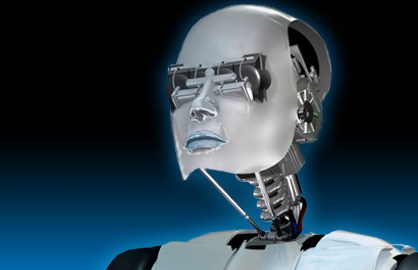The Evolution of Technology

Every baby born today in the Western world has a life expectancy of about 100 years, which means it will be alive in 2110. It’s nearly impossible to forecast in detail life in 2110. However, what we can venture to guess based on current trends is that humans will still populate the planet, as will animals, and we will be joined by simple biological creatures designed synthetically in the lab, and of course, machines. Machines will roam the earth, toiling in factories, taking our children to school, delivering babies, cleaning the streets, and other such tasks, which will make them seemingly indispensable to us.
We dont know how sophisticated these machines will be a century from today. Some might continue as dumb machines like the ones we have now, assiduously screwing on the caps of Coke bottles. Or they might be humanoid robots that resemble us and nurse our elderly parents. The increasing sophistication of Technology from the steam engine and discovery of electricity to telecommunications, the Internet and biotechnology can be seen as a haphazard confluence of the breakthroughs of geniuses — or it can be seen as an evolutionary pattern.
Brian Arthur of the Santa Fe Institute believes that Technology evolves over time: “machines started as disparate pieces of seemingly unconnected technologies, but like humans, they also have an origin and a process of evolution.” He is arguably the first person to tackle the question of the origin and evolution of machines, eloquently laid out in his book, The Nature of Technology. Evolution is an increase in maturation and complexity, and does not have to necessarily follow the path of Darwinian evolution, which is modification by descent – nature introduces small variations in an existing form over a long period of time. Granted the results are staggering, but the journey, such as that of the ape’s evolution into mankind, can take millions of years.
Technology, according to Arthur, spawns new generations of products by using existing components, a phenomenon he calls combinatorial evolution. The change in ‘species’ can thus be quite radical in a short period of time. The greater the number of components we have at our disposable, the larger the number of permutations of new technologies that can be created, and the faster the evolution. The technology eco-system becomes alive with increasing possibility with the passage of time.
“Slowly, at a pace measured in decades, we are shifting from technologies that produced fixed physical outputs to technologies whose main character is that they can be combined and configured endlessly for fresh purposes. Technology, once a means of production, is becoming a chemistry.” (Brian Arthur)
There is yet another aspect to Technology’s evolution: technologies always capture a phenomenon (like using wind for power), with new phenomenon becoming available for capture with more powerful tools. Take the simple example of the fact that when you bend a flexible material, it stores energy. This phenomenon was used to create ancient tools like the bow and arrow. Today, we use all kind of phenomenon – optical, chemical, physical, and electrical to name a few – to create new technologies.
The rules of Technological evolution thus make a strong argument for accelerating evolution. Compared to the snail-paced evolution of the human species, we have to wonder if we’ll be able to manage the increasing complexity of technology or if the dystopian vision of some futurists will come true: machines will become ‘alive’ with artificial intelligence and not just roam the earth but also rule it.
Ayesha and Parag Khanna explore human-technology co-evolution and its implications for society, business and politics at The Hybrid Reality Institute.




